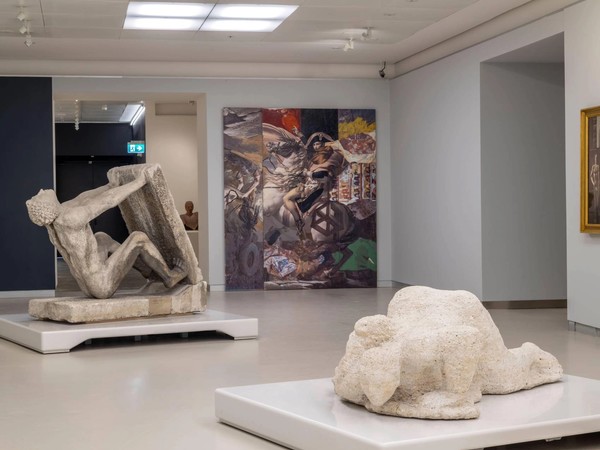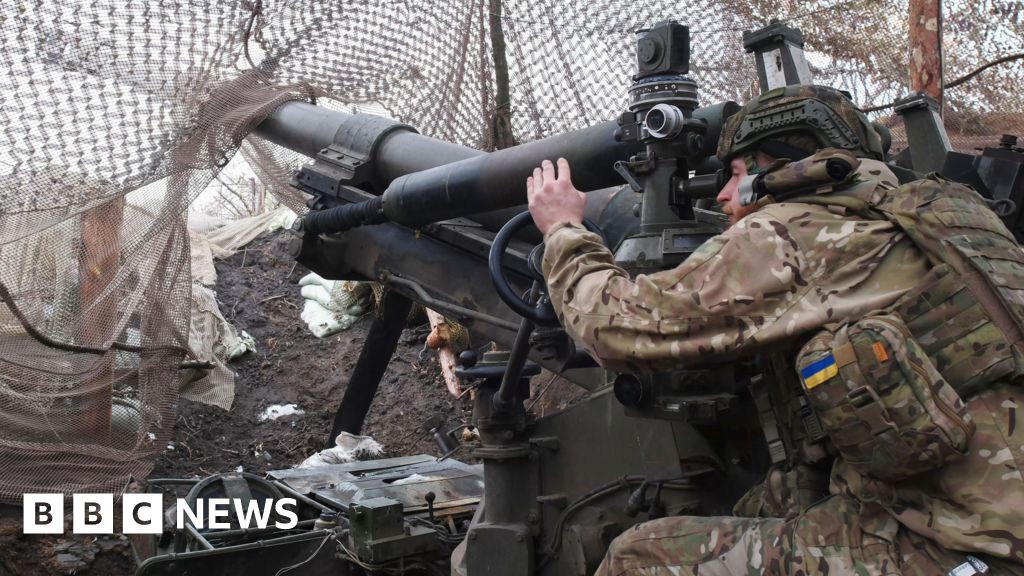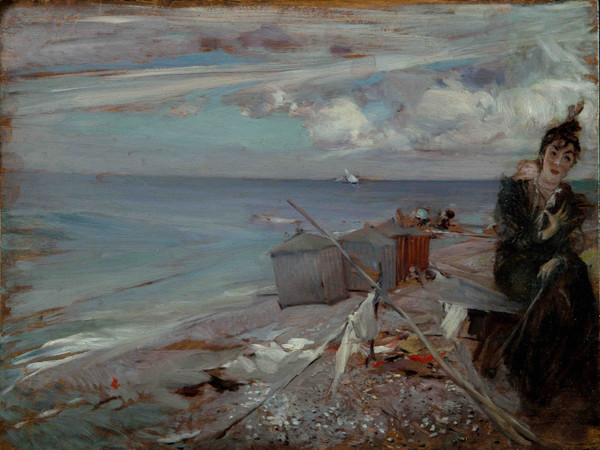Robert Rauschenberg, I was able, I saw Elba1983 Marco Bertoli
Compiled by Gianfranco Maraniello, director of the museums of the modern and contemporary art of the municipality of Milan, and of the artistic director of Miaart Nicola Ricciardi with Viviana Bertanzetti, uses the project of the collaboration of the Robert Rauschenberg Foundation.
Starting point of Rauschenberg and the twentieth century It is the Futurism Gallery, where the most important collection dedicated to the historic Italian avant -garde is exhibited. The unbridled enthusiasm of Balla for the car and Rauschenberg speed reacts with one of him MateThe series in which Auto Sirings and residues of Service Stations cancel for a criticism of the excess of oil supply that led to the collapse of the price to the barrel and the resulting economic crisis in the mid -1980s.
Upper floor The story is the protagonist. Rauschenberg reinterprets the nineteenth-century painting by Jacques-Louis David Bonaparte Valica Il Gran San Bernardo in the work I was able, I saw ElbaQuote from the legendary Palindrome pronounced by Napoleon before crossing the Alps. Paints of Carrà and Sironi participate in the dialogue, but also the great sculpture of Arturo Martini Bligny’s dead would extendWhose title evokes a speech by Mussolini about the complicated relationships between Italy and France in the mid -1930s.
Continuation of the travel route, we fly in the 1950s to meet the first of the artists who knew Rauschenberg personally. These are Alberto Burri, pioneer of experiments with materials such as plastic, sand, iron, cement, which was an important source of inspiration for Rauschenberg. To tell you it is one of him CardboardThe series in which the artist introduces pieces of cardboard in the early 1970s no longer as support, but as a material shown in the immediate value of a waste element.
Recently the path of the museum of the twentieth century was dedicated to art between the sixties and the nineties. Here the Shadow sculpture by Claudio PARMEEGGIANI DIALOGES in the name of the binomial presence/absence with one of the Ghost By Rauschenberg, a series from 1991 with Serigrafate images on mirrored aluminum: two dreamy images that appear and DIN report disappear into the variations of light, shadows and reflections on their respective surfaces.
The influence of Rauschenberg’s mowing porsers on the Nouveau Réeism Movement is located in the middle of the next section, where one of his own Spread He meets the works of Christo, Arman and Daniel Spoerri, while in the iconic room with a view of Piazza Duomo the works with a view White one Real Leging by Jannis Kounellis and the imponation Chinese party of the master of the Italian Pop -Art Mario Schifano confronts each other with Summer GlutvenconeOne of the most pop works in Rauschenberg. Here, art integrates with the chaos of life: the assemblies of waste objects explore the potential of the metal and – as me Tourists By Maurizio Cattelan who peeping through an Architrave – they invite you to look at the multiple options that are inherent in things.
After the encounter between the dream -like Ripe And the conceptual works of Giulio Paolini, to close the path, a three -way conversation with Eliseo Mattiacci and Gilberto Zorio focused on the concept of transformation: The heart of the setting is the ambitious project Onoto Snare / Venezuela Rocks By Rauschenberg (1985-91), synthesis of his vorarious curiosity and his indomitable spirit of sharing and cooperation.
#Rauschenberg #twentieth #century #art #dialogue #shown #Milan #Milan





